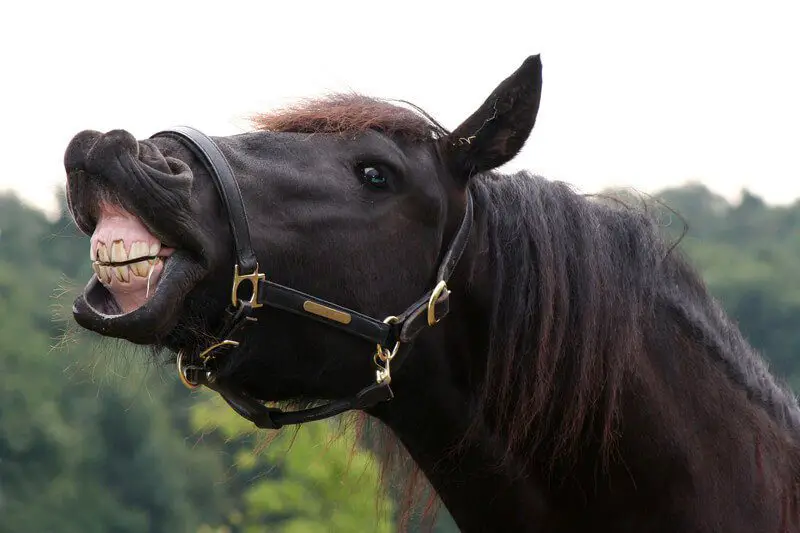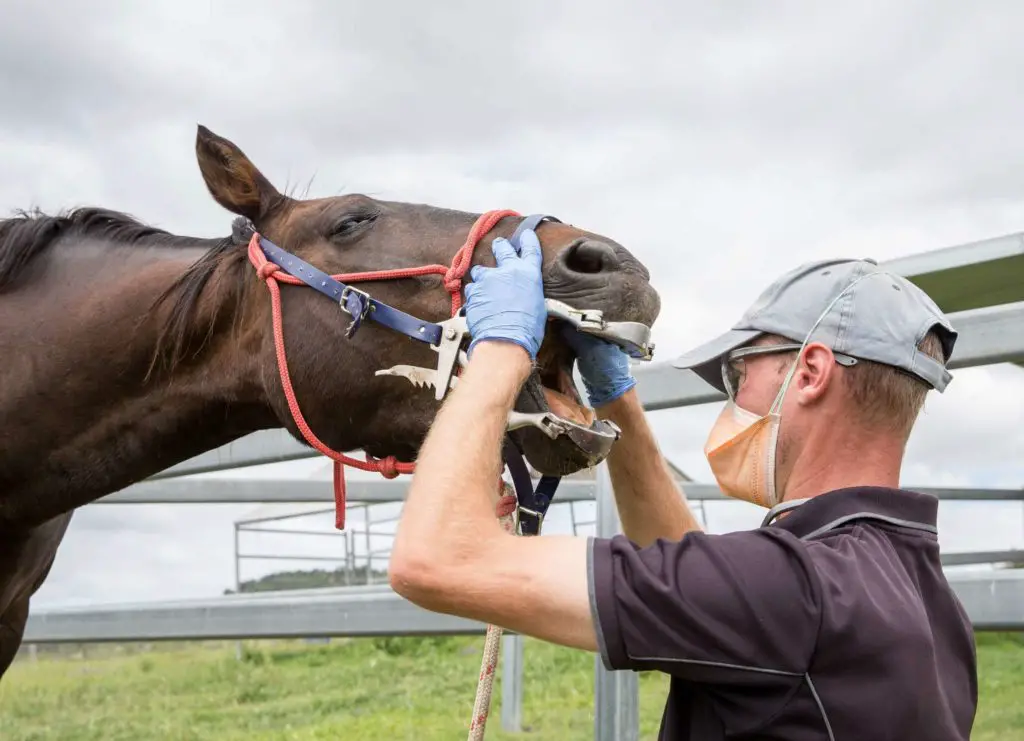As a horse owner you may be curious about the differences between canine teeth and wolf teeth in horses. While both types of teeth are located in the same general area of the horse’s mouth, they serve different purposes and have distinct characteristics that set them apart from each other. Canine teeth are typically found in male horses, although mares may also have them. These teeth are located between the incisors (front teeth) and the premolars (bigger teeth at the back) and are typically longer and more pointed than other teeth in the horse’s mouth. In contrast, wolf teeth are small, peg-like teeth that are located just in front of the first premolars. They are usually found in both male and female horses, but not all horses have them. They can be found in both upper and lower jaws, although very uncommon in the lower jaw. Canine Teeth in Horses As a horse owner, I have always been interested in the different types of teeth that horses have and what their functions are. One type of tooth that is often talked about is the canine tooth. Canine teeth are often referred to as “tusks” and can grow up to 5cm long in some horses. The primary function of the canine tooth in horses is to fight and defend themselves against predators. In the wild, horses would use their tusks to fight off wolves, mountain lions, and other predators. However, in domesticated horses, the need for these teeth has diminished. Canine teeth can also be used to establish dominance within a herd. During play or fighting, horses may use their tusks to assert their dominance over other horses. This is why it is important to have a horse’s teeth checked regularly by a veterinarian to ensure that their tusks are not causing any harm to other horses or humans. Wolf Teeth in Horses As a horse owner, I have learned that wolf teeth are a common dental issue that many horses experience. Wolf teeth are small, pointed teeth that can be found in front of the first upper molars in a horse’s mouth. These teeth are often referred to as “vestigial” because they are remnants of the horse’s evolutionary past. Wolf teeth can cause discomfort for the horse, especially when a bit is placed in their mouth. This can lead to behavioral issues, such as head tossing and resistance to the bit. It is important to have a veterinarian or equine dentist remove the wolf teeth to alleviate any discomfort for the horse. It is important to note that not all horses have wolf teeth, and some may have them on only one side of their mouth. It is also possible for horses to have more than two wolf teeth. It is recommended to have a horse’s teeth checked regularly to ensure their dental health and comfort. It is important to have your horses mouth looked at before you put a bit in their mouth in case wolf teeth are there. The best age is between 12 months to 2 years of age. Wolf teeth often don’t appear until 18 months to 2 years of age and some horses can be even older for them to erupt. It is important for early removal as these teeth can fuse to your horses jaw the older they get- making them difficult and painful to remove. Differences Between Canine and Wolf Teeth Location Canine teeth are usually located between the incisors and the premolars in the horse’s mouth. They are often found in male horses, but some mares may also have them. In contrast, wolf teeth are located in front of the first upper molars and are present in both male and female horses. Appearance Canine teeth are usually longer and more pointed than wolf teeth. They also tend to be more curved and have a thicker root. Wolf teeth, on the other hand, are smaller and less pointed. They may be flat or slightly curved and have a shorter root. Function Canine teeth are typically used for fighting and biting, and are more prominent in stallions and geldings. In mares, they may not be as developed and may not serve any significant function. Wolf teeth, on the other hand, are vestigial teeth that no longer serve any purpose. They are often removed to prevent discomfort or pain when a bit is placed in the horse’s mouth. Overall, the main differences between canine and wolf teeth in horses are their location, appearance, and function. While canine teeth are more prominent in male horses and are used for biting and fighting, wolf teeth are smaller and vestigial, and may cause discomfort when a bit is placed in the horse’s mouth. Why Do Horses Have Canine and Wolf Teeth? Canine teeth, also known as “tusks,” are typically found in male horses and occasionally in mares. These teeth are located between the incisors and molars and are used primarily for fighting and defense. In the wild, stallions will often use their canine teeth to fend off predators or other males during breeding season. In domesticated horses, the presence of canine teeth is largely cosmetic and does not have a significant impact on their overall health or well-being. Wolf teeth, on the other hand, are small, peg-like teeth that are located just in front of the molars. These teeth are typically present in both male and female horses and may cause discomfort or pain if they interfere with the bit. For this reason, many horse owners choose to have their horse’s wolf teeth removed to prevent any potential issues while riding or training. It is best to have this done at an early age (<2 years old) to prevent any long term problems or complications, such as the teeth fusing to the jaw and potentially breaking during removal. Conclusion There are several key differences between canine teeth and wolf teeth in horses. Canine teeth are typically larger and more pointed than wolf teeth, and they are located







